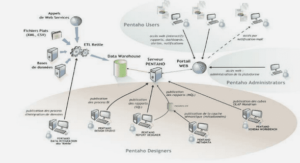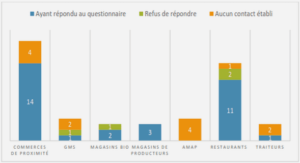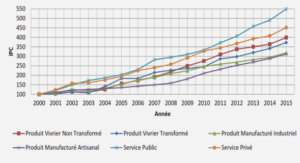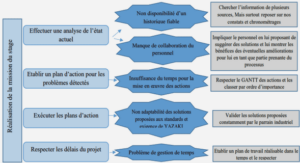Social Significance of the Study
Overview of the Integrated Pathway Perspective
Doray’s integrated perspective on learning and educational pathways in PSE is a contemporary approach involving a synthesis of concepts stemming from different perspectives in order to account for the atypical educational pathways followed by many students in modern society. Contrary to the standard linear pathway prescribed by education systems, involving sequential progression through levels, and age-related participation (Heinz & Kruger, 2001); atypical pathways exist. These atypical pathways often involve “stopping-out” (versus dropping out) and retuning at a later time (Ma & Frempong, 2008), frequent withdrawals, or reversals such as moving from a university program to a technical one (Picard, Trottier & Doray, 2011). As such, the unanticipated variability and new phenomena encountered in recent studies related to educational pathways, revealed the necessity of a distinct and original conceptual framework encompassing the connection between institutional and human development (Heinz & Kruger, 2001), in order to analyze attainment, perseverance, attrition and pathways in a longitudinal manner.
Thus, the integrated pathways perspective consists of concepts emanating and overlapping from multiple approaches, mainly, the life course approach, reproduction theories and interactionist perspectives. The life course approach situates individuals as the product of their own stories and considers how historical, social, cultural and institutional dimensions relate to individuals’ life roles associated to family, education and work, throughout their life courses (Hutchison, 2010). Reproduction theories recognize the structural aspects related to social origin, while interactionists consider the integration of individuals in social groups or institutions (Picard, et al., 2011). As such, the key concepts accounting for the educational experiences of individuals follow.
Learning and Educational Pathways
Pathways are broadly defined as a succession of events and positions occupied by individuals during their life course (Doray, 2011). They are rooted in socio-historical contexts and highlight the interdependence between life spheres, and the role of individuals in the authorship of their lives. Furthermore, learning pathways comprise educational experiences and events regardless of context, taking place over a long period of time, while educational pathways, a subset of learning pathways, are a sequence of situations and events occurring at a given time within the educational system (Doray, 2011). Learning and educational pathways effectively account for life bifurcations, which are described as configurations in which contingent events or disturbances can be the source of major shifts in individuals’ trajectories (Bessin, Bidart & Grossetti, 2010).
While there is much overlap among the above concepts, there are also key points of divergence. Pathways and academic tracks both account for progression through different levels of schooling of individuals, however, pathways are distinguishable from formally structured, highly linear academic tracks, as they account for bifurcations causing atypical pathways for an increasing number of students (Taylor & Krahn, 2013). Similarly, while trajectories and careers are reliable in the analysis of the educational experiences and progression of youth, they place a large weight on social background and the role of the institution in the individual’s experience, respectively. Pathways allow for a broader analysis placing equal consideration on historical, social, cultural and institutional dimensions related to individuals’ life roles in sequences of events or situations. As such, due to the non-traditional paths that characterize immigrants’ educational experiences (Cone et al., 2014; Potvin & Leclercq, 2011) which can include a wide array of circumstances such as interrupting studies for (often unanticipated) family related reasons, switching from a university program to a technical one, returning to studies after dissatisfactory work experiences etc., the learning and educational pathways concept will be retained for the analysis of the educational pathways of Haitian immigrant youth.
|
Table des matières
Introduction
1. Social Significance of the Study
1.1 Immigrant Postsecondary Participation and Vulnerable Subgroups
1.1.1 Visible Minorities and Haitian Communitie
1.2 Postsecondary Completion Among Black Visible Minorities
1.3 Scientific and Social Relevance of the Research
1.4 Conclusion
2. Literature Review
2.1 Significant Predictors of Postsecondary Attainment Among Immigrant Youth
2.1.1 Human, Cultural and Social Capital
2.2 Postsecondary Perseverance and Attrition
2.3 Transitions and Pathways
2.4 Synopsis of the Literature
3. Conceptual Framework
3.1 Overview of the Integrated Pathway Perspective
3.2 Conceptualization of the Research
3.2.1 Academic Tracks
3.2.2 Educational and Learning Trajectories
3.2.3 School and Learning Careers
3.2.4 Learning and Educational Pathways
3.4 Dimensions of Educational and Learning Pathways
3.4.1 Interactions Between Individuals and Educational Institutions
3.4.2 Dynamics Between Objective and Subjective Aspects of Individuals’ Experiences
3.4.3 Interactions Between School and Extracurricular Experience
3.5 Research Question and Objectives
4 Methodological Approach
4.1 Type of Research
4.1.1 The Primary Research Project
4.1.2 Qualitative Research
4.1.3 Life Story Method
4.2 Description of the Participants
4.3 Data Collection Methods
4.4 Data Collection Strategies
4.4.1 Ethical Consideration
4.5 Data Analysis Strategies
4.6 Conclusion
5. General Finding
5.1 General Findings Among Participants
5.2 General Findings Among Parents
5.3 Conclusion
6. Typical Pathways
6.1 The Exploratory Pathway
6.2 The Constrained Pathway
6.3 The Disoriented Pathway
6.4 Summary
7. Discussion
Conclusion
Bibliography
![]() Télécharger le rapport complet
Télécharger le rapport complet




